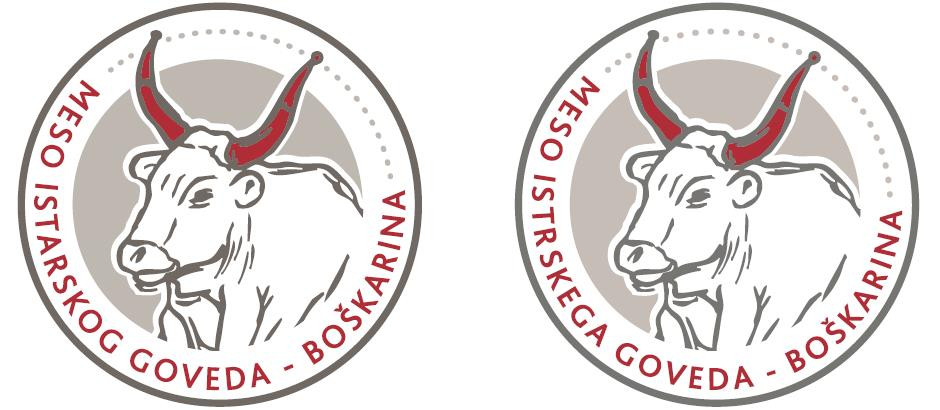European Commission protected the “Meso istrskega goveda - boškarina"
This is the third product of Istria, jointly protected by Slovenia and Croatia.
Application for protection of the meat of “Meso istrskega goveda – boškarina / Meso istarskog goveda – boškarina” (Istrian cattle – the Boškarin cattle) under the protected designation of origin, was jointly prepared by the Slovenian and Croatian Boškarin cattle breeders, and the application was submitted to the Ministry of Agriculture, Forestry and Food (MAFF) by the ‘Agraria’ Agriculture Cooperative from Koper/Capodistria.
The “Meso istrskega goveda – boškarina / Meso istarskog goveda – boškarina”) is obtained from the autochthonous cattle breed known as the Istrian cattle, which is calved in the geographical area of the Istrian Peninsula, of the Kvarner Islands, of the Karst Plateau, Čičarija / Ćićarija / Cicceria, the Podgrad / Materija Valleys / Podgrajsko podolje, including the southern slopes of Brkini / the Brkini Hills.
It is supposed that Istrian cattle was named “Boškarin” due to traditional method of rearing and feeding as numerous keepers during the summer, on account of lacking pasture, brought the animals into the woods, where they mostly fed on tree leaves (“boška”, il bosco in Italian, meaning the woods and high plants).
Nowadays, primary feed of these animals constitutes of voluminous feed (pasture, straw) produced in the same geographic area, and all the meat production phases of the Boškarin cattle, from calving to slaughter, must take place in the same geographic area.
The “Meso istrskega goveda – boškarina / Meso istarskog goveda – boškarina”) shall ripen in controlled regime for 15 days at least. The meat colour ranges from light rosy to dark red, the meat is moderately marbled (with moderate intramuscular fat deposits), aromatic, of pleasant fragrance, and of full and characteristic beefy taste. On conclusion of ripening, “Meso istrskega goveda – boškarina / Meso istarskog goveda – boškarina”) may be quick-frozen, or placed on the market as a fresh product. As the meat is soft and juicy, it is adequate for most diverse dishes. Nevertheless, its specific characteristics are best expressed in cooking procedures that require longer and wet heat treatment.
In sale, the Boškarin meat is identified with a joint symbol “Meso istrskega goveda – boškarina/ Meso istarskog goveda – boškarina”.
Prior to commencing the production of the ”Meso istrskega goveda – boškarina/ Meso istarskog goveda – boškarina”, the producers shall obtain the relevant certificate, certifying that their production takes place in line with the relevant specifications: certifikat, da njihova proizvodnja poteka skladno s specifikacijo (in Slovene).
Certified producers of products under quality schemes are evident via the web browser “Quality Scheme Records”: Evidenca shem kakovosti (in Slovene).
In procedure pending the protection by the European Commission there are two other joint applications by Slovenia and Croatia, for the Istrski ovčji sir (Istrian sheep cheese), and for the Istrski med (Istrian honey).


